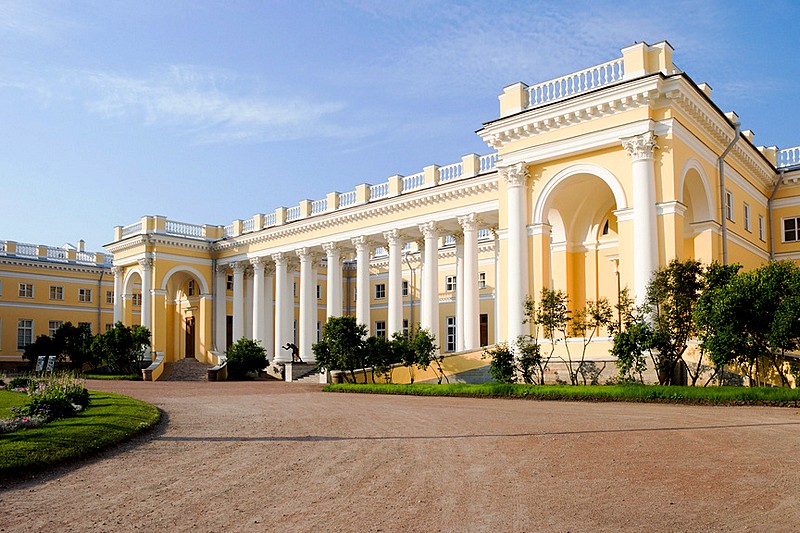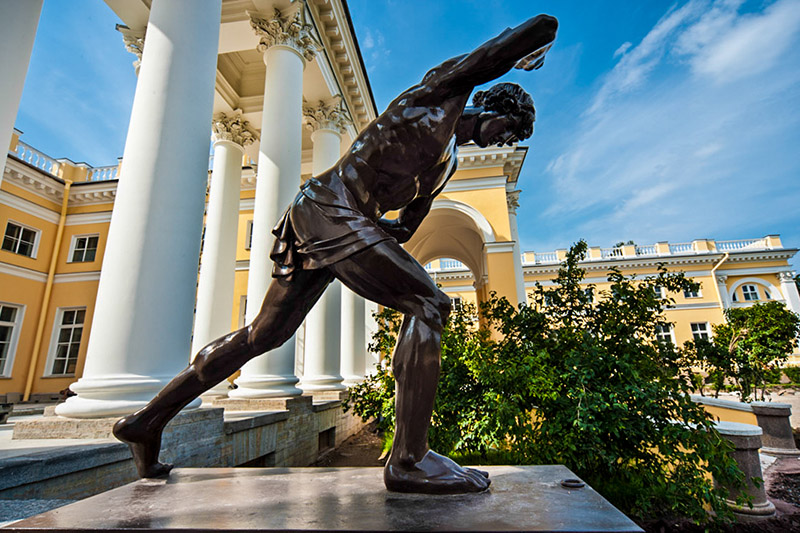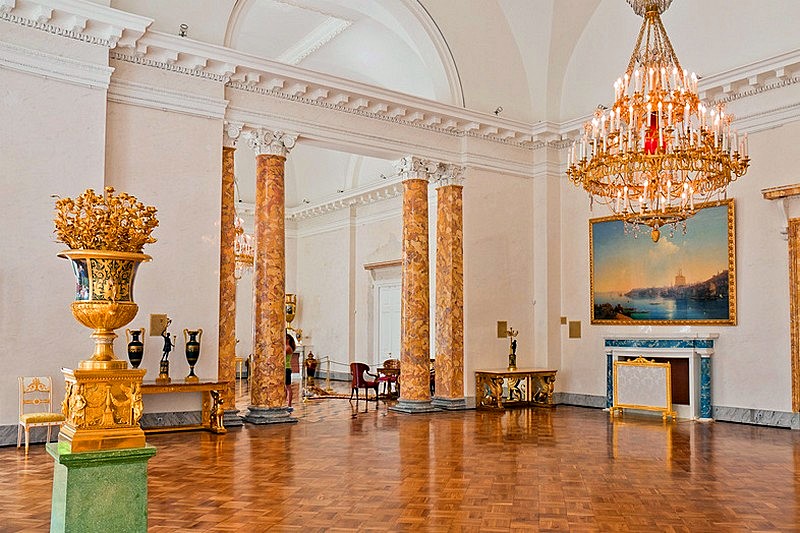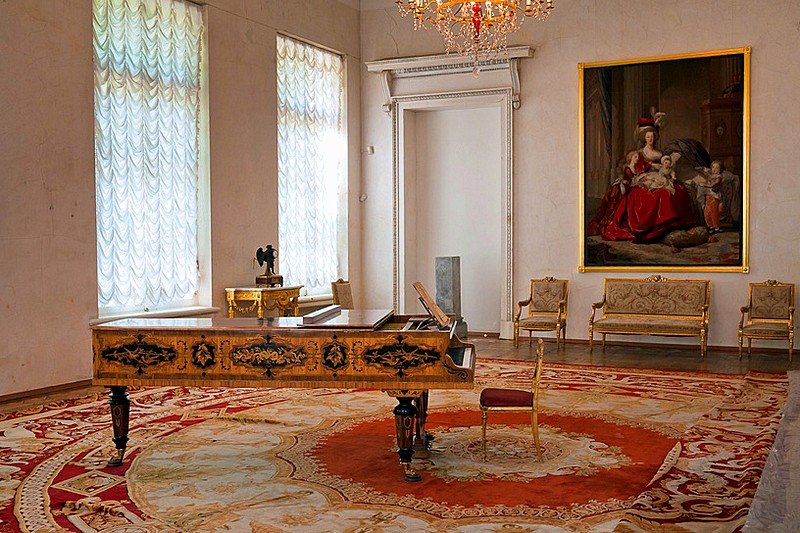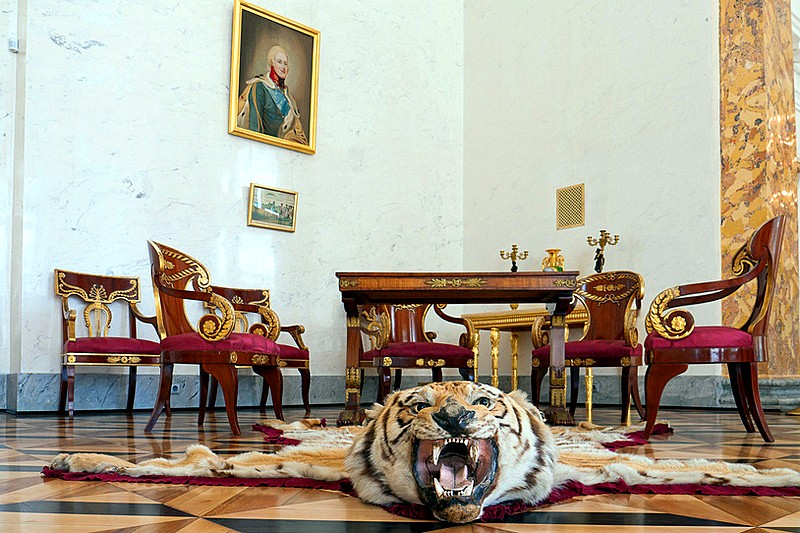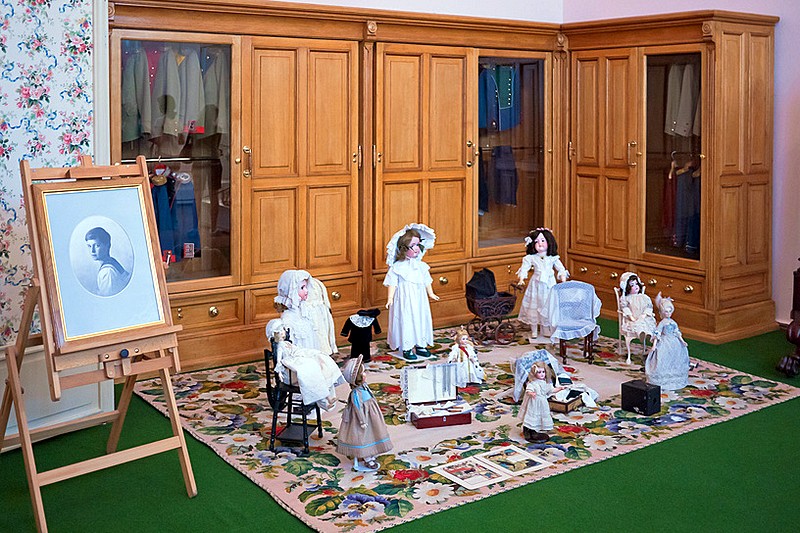Alexander Palace
Built by Giacomo Quarenghi on the orders of Catherine the Great as a present for her favourite grandson Alexander Pavlovich (the future Alexander I) to mark his wedding, the Alexander Palace was completed in 1796 and is considered one of the finest neoclassical buildings in Russia. Quarenghi, who originally planned the building for St. Petersburg, was encouraged to simplify his designs for the more relaxed surroundings of Tsarskoe Selo, and the result was a beautifully harmonious building with sparing but exquisite decoration. The northern facade is particularly impressive, with a fine colonnade of Corinthian columns in the centre, and protruding wings on either side.
Alexander himself spent little time in the palace, and once he ascended to the throne he in turn presented to his brother and future heir, Nicholas I. Nicholas was particularly fond of the building, and made extensive improvements to the interiors and the grounds. It then became a tradition for the Alexander Palace to be the summer residence of the heir to the throne, and thus the building was regularly renovated and modernized. The Alexander Palace is most famous, however, as the permanent home of Nicholas II, his wife Alexandra, and their children. The family had one wing of the palace completely redecorated to create a luxurious private residence, and Nicholas also commissioned some fine Art Nouveau state rooms later in his reign. After the October Revolution, the palace interiors were preserved untouched as a museum to show the proletariat how the Tsars had lived. This experiment was soon seen as creating too much sympathy for the ousted monarchy, however, and the museum was slowly dismantled through the 1920s and 1930s.
Although the Alexander Palace survived Nazi occupation comparatively unscathed, the decision was taken after the war to turn it into a naval college, and the museum's collection was dispersed among the other Imperial palaces. Since Perestroika, however, a campaign by a group of American and Russian enthusiasts has resulted in the museum being reopened, and an ongoing project to recreate the interiors as they were in the reign of the Nicholas II. There are currently three restored rooms to be seen, and a further ten halls are occupied by an exhibition devoted to the history of the palace and the lives of the last Romanovs. The touching exhibition includes photographs, models, personal effects, and screenings of documentary film shot during Nicholas's reign.
| NB: | Since 1 September 2015, the Alexander Palace has been closed for restoration and is no longer open to the public. The date of re-opening for the palace has not yet been announced. |
|---|

